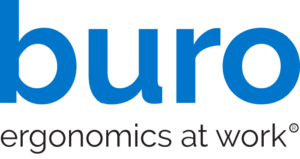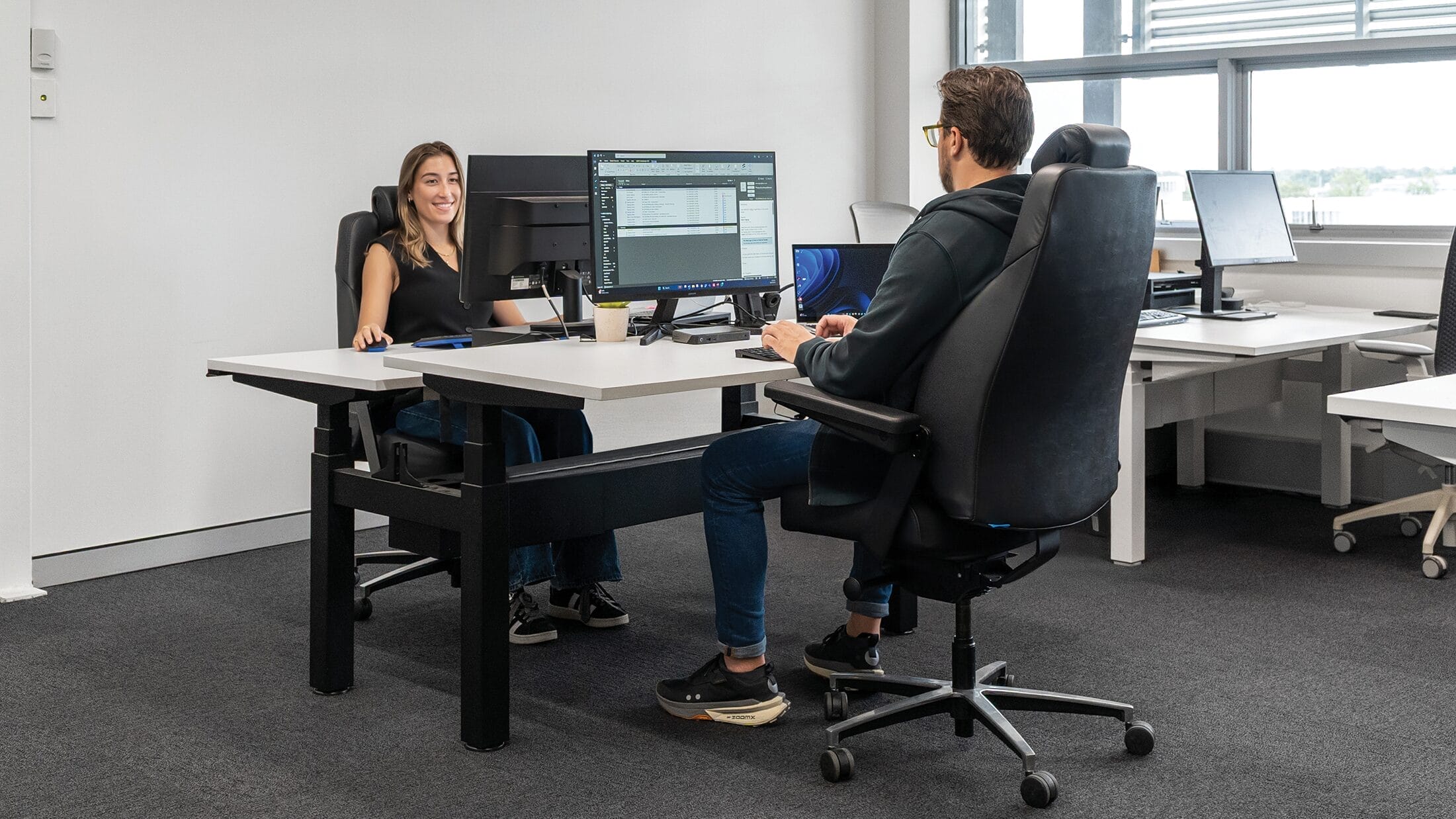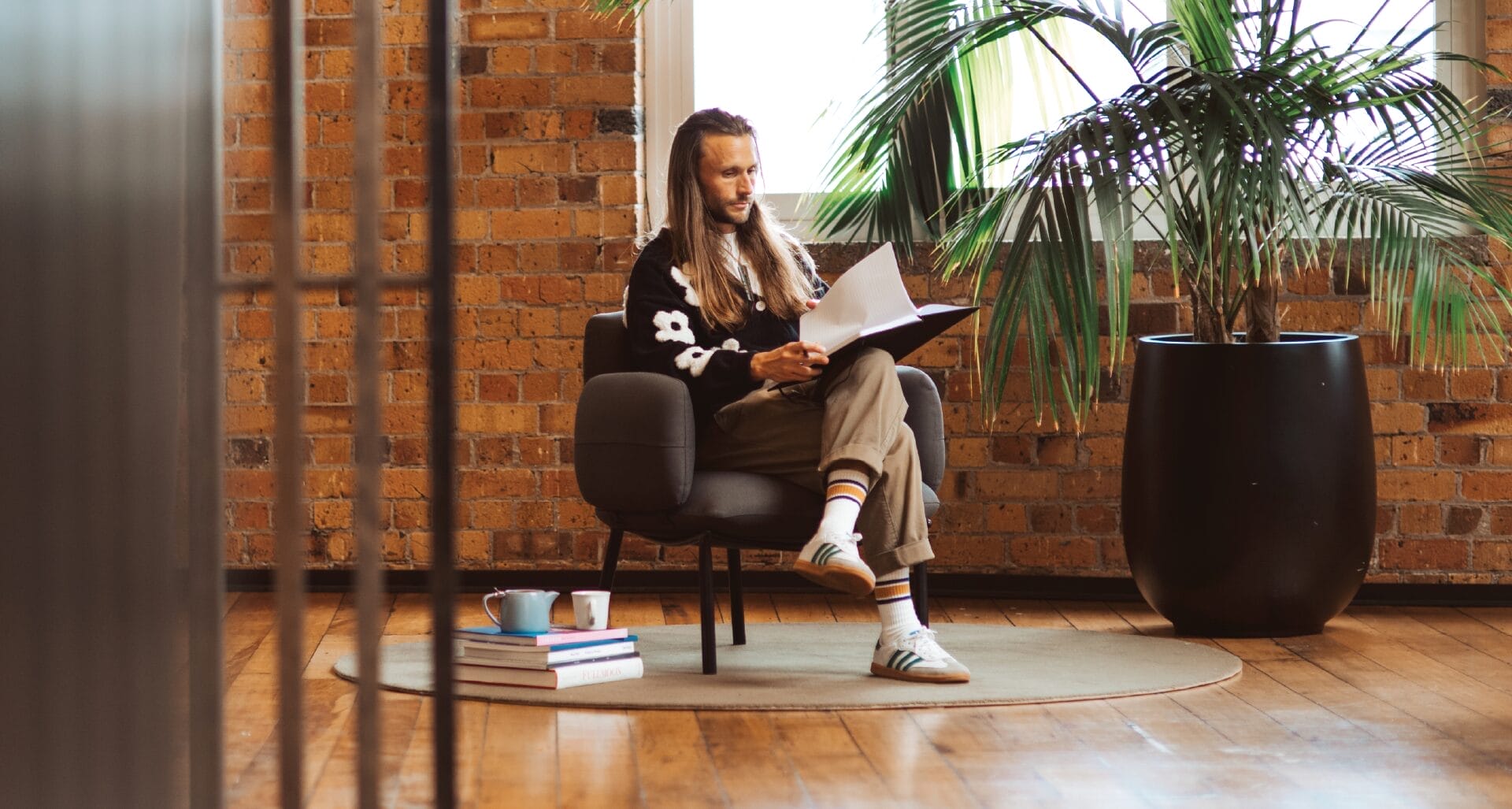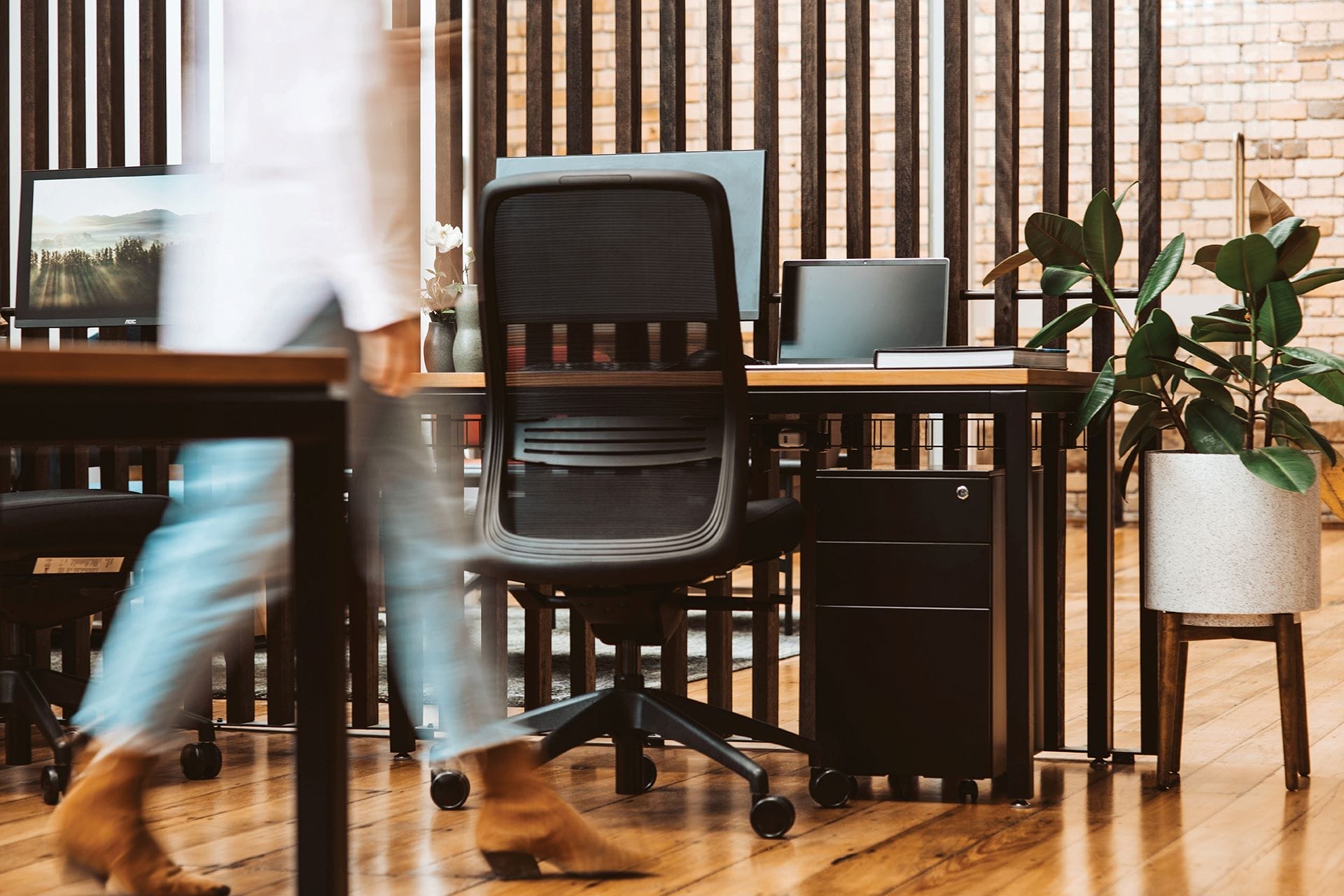Workplace interior design goes beyond the aesthetics, laying the foundation for a comfortable, dynamic and productive office environment. More than ever, employers are looking to make the office more homely, using the latest workplace design trends to their advantage.
Interior design touches like lighting, furniture and flooring can transform an outdated workplace into something modern and inviting, while new design concepts can make the office a more welcoming place to be.
The way we work is constantly changing, with hybrid working arrangements and technology bringing new demands to the fore, requiring fresh thinking from employers. Design trends are quickly evolving to meet these challenges.
With 2024 underway, employers have an opportunity to approach workplace design from a new perspective and reshape the office to better suit employees’ needs. In this article, we’ll highlight seven workplace design trends to watch this year.
The challenges facing modern workplaces
The ever-changing nature of the modern workplace presents a host of challenges for designers, who need to find new ways to satisfy the evolving needs of employees.
This year’s top priorities for office workers include hybridisation, quiet spaces to focus, and privacy.
1. Hybridisation
The pandemic has changed work forever, and the perfect workplace is now a hybrid between the practicality of the office and the comforts of home.
As European design trends show, workplaces need to be as comfortable as the home office while providing the right tools to support staff.
Offices need comfortable furniture for sitting, meeting and collaborating, as well as the more traditional desk chairs and conference rooms. The hybridisation of the office has just begun, and this trend will accelerate in the years to come.
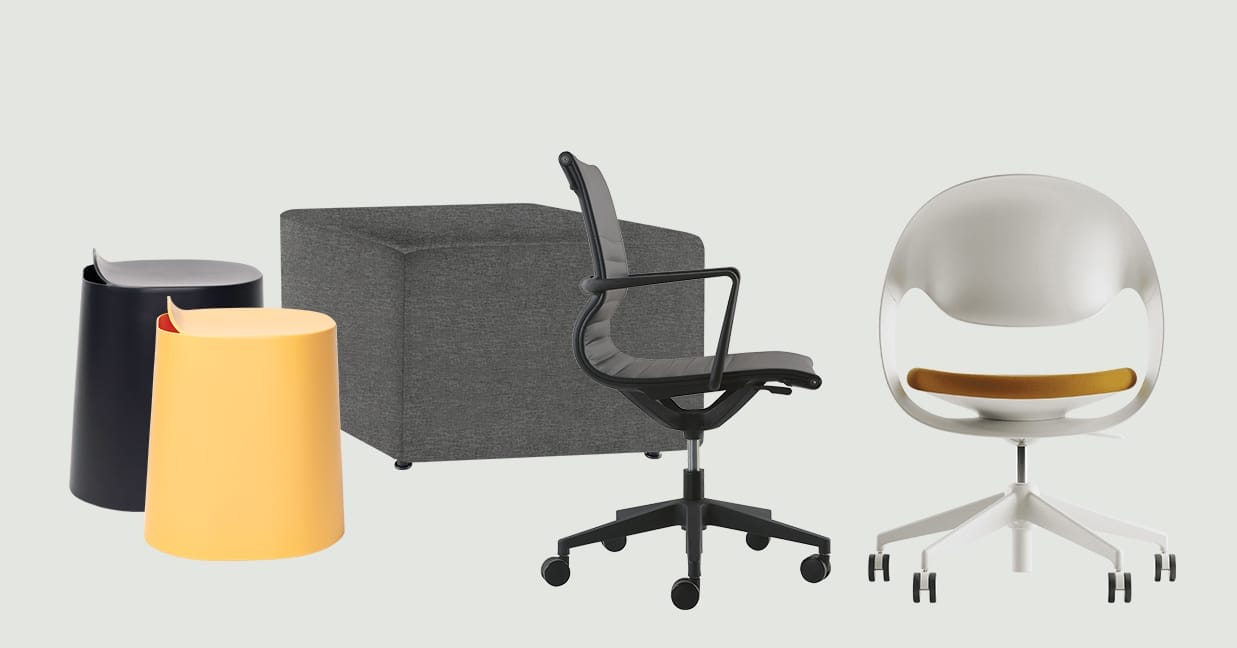
A diverse range of seating helps to imitate the casual comforts of home for meeting and collaborating. From Left to right: Buro Peekaboo, Konfurb Eightby4, Buro Diablo and the Konfurb Loop.
2. Modular comfort
As employers embrace hybridisation, the concept of modular comfort is becoming more prevalent in design concepts.
By introducing comfortable seating and well-furnished communal areas, employers can bridge the gap between home and the office, ensuring staff are in tip-top physical and mental shape.
Adaptable furniture is at the heart of this idea, especially seating that can be reconfigured and converted into collaborative spaces.
Through modular comfort, employers can tempt remote workers back to the office and boost wellbeing so staff can do their best work.
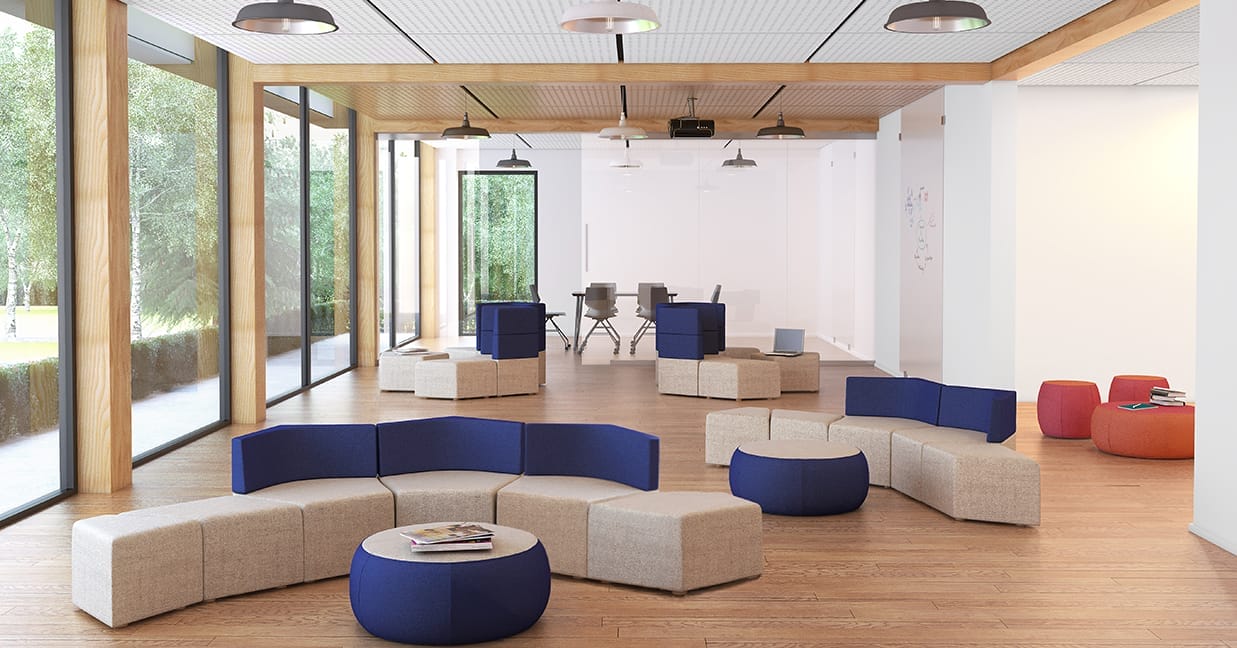
Modular soft seating can be easily reconfigured for multi-purpose collaborative spaces.
3. Integrated play
Once the domain of forward-thinking, big-spending Silicon Valley tech companies, more businesses are introducing recreation and play areas into their offices.
Many companies now offer ping-pong, foosball tables, and multi-game sets, integrating these rec rooms into the wider design process.
Recreation areas encourage social interaction and team building, boosting wellbeing and engagement.
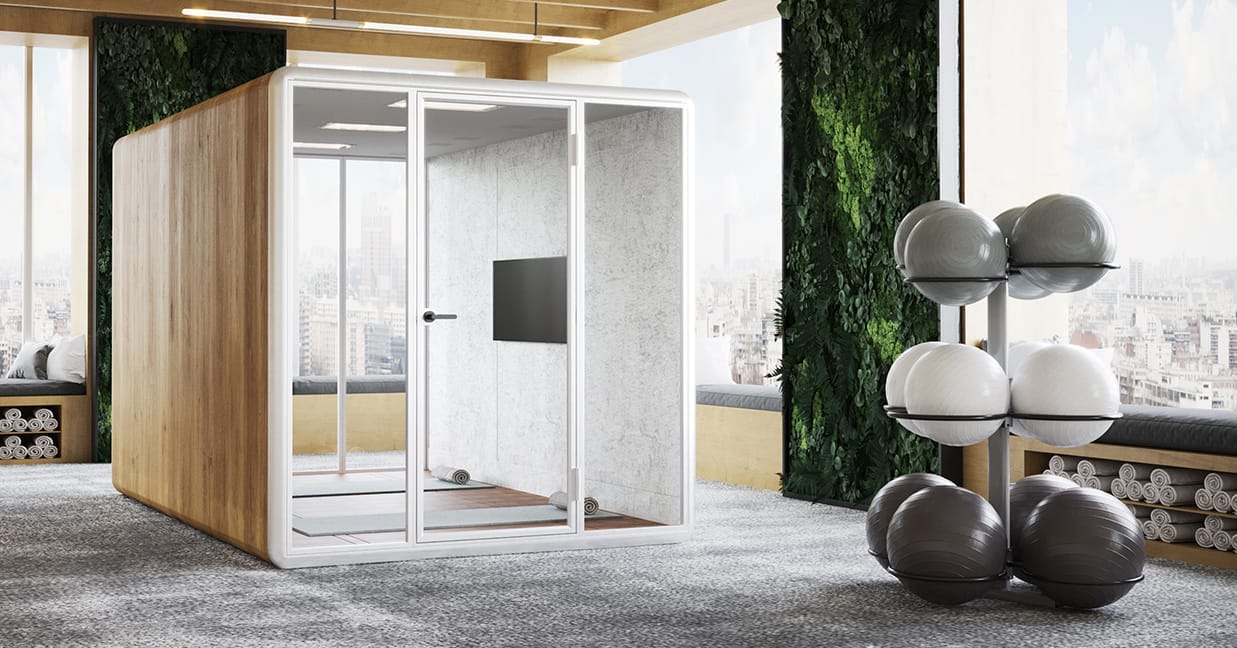
Kolo Duo meeting booth can be used as an office wellbeing space.
4. Natural materials
Employees want to feel more at home these days, and simple design touches can make that a reality.
Increasingly, interior designers are turning to natural materials and varieties of wood and natural fabrics.
Warm, inviting furnishings once associated with living rooms are now equally at home in the office, further blurring the line between the workplace and home.
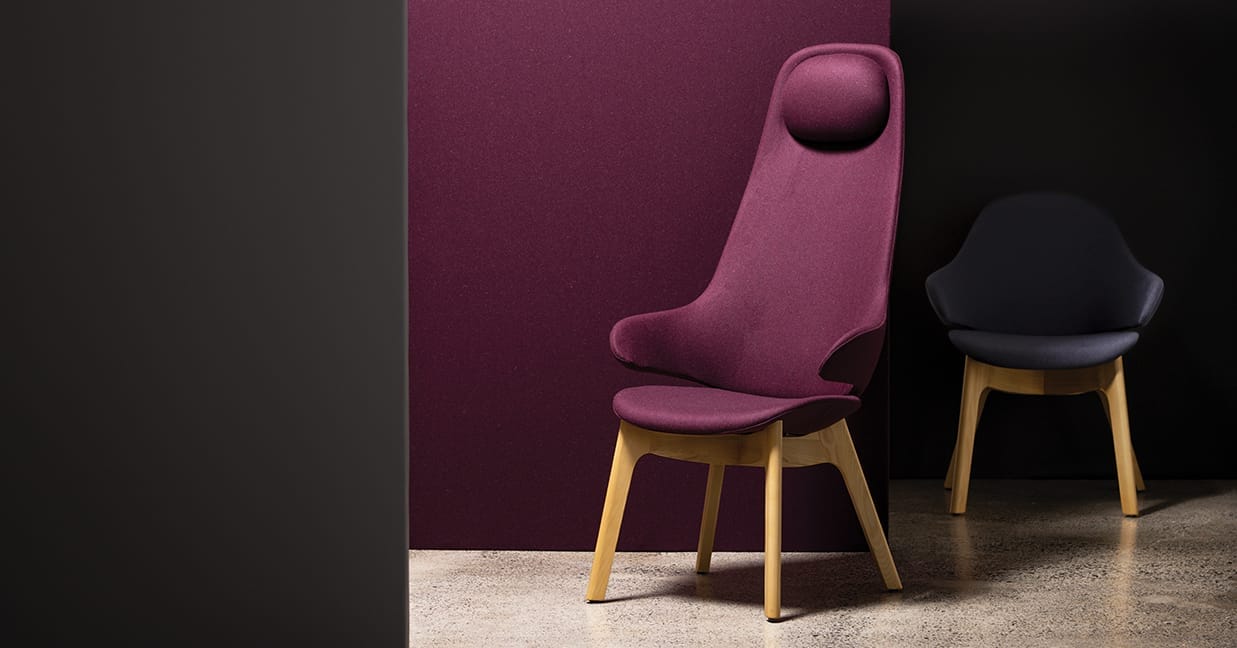
The Konfurb Orbit High Back Wooden Base and Konfurb Orbit Mid Back Wooden Base with custom upholstered natural wool-based fabrics.
5. Repurposing the office
The concept of what makes people productive has evolved, according to the British design academic Jeremy Myerson, with office workers increasingly motivated by high levels of comfort and satisfaction in their surroundings.
He says employers should reconsider their approach to interior design as a result.
Myerson believes the office will remain a core part of the new landscape of work, but will need to be repurposed to suit modern workers’ needs.
He encourages designers to keep comfort in mind as they plan new projects.
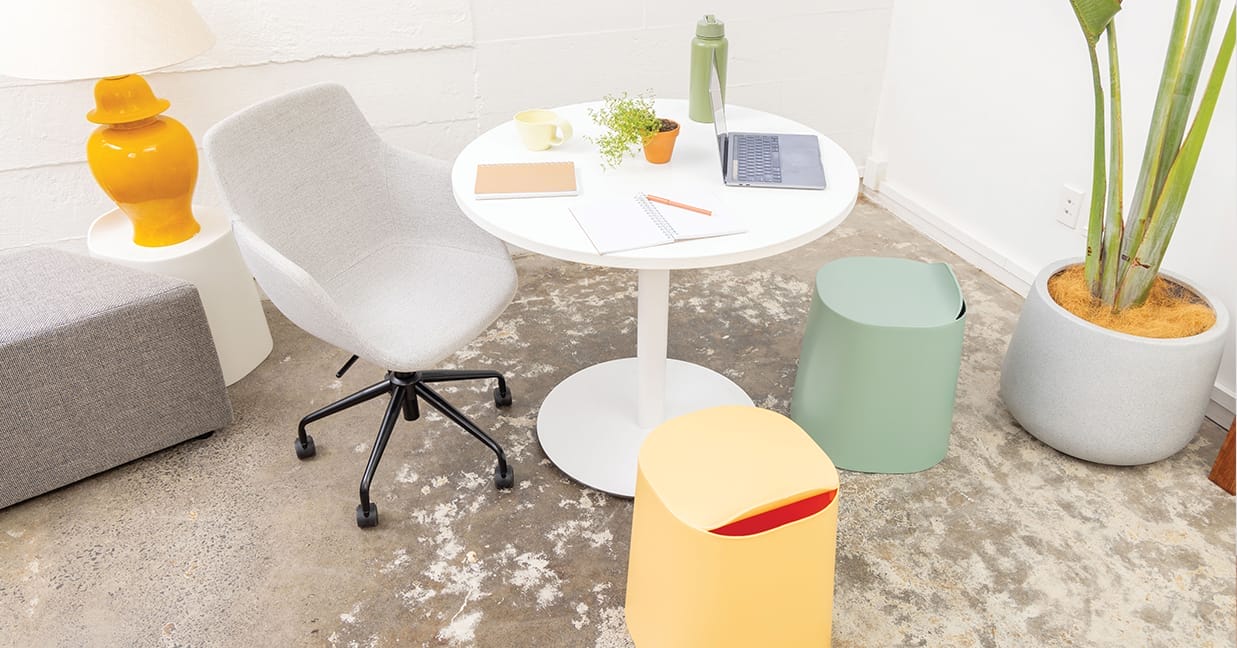
Interior design that allows for iterations enables the office to stay relevant to employees’ needs. This casual space features the Buro Peekaboo and Mondo Haze and enables employee’s to move the seating around as they need.
6. Focus spaces
As designers adapt to the changing nature of work, more offices are incorporating dedicated areas for employees to focus and reflect.
Employers are looking beyond basic resources like rows of desks, offering spaces to escape the noise of a busy open-plan office.
Focus spaces can be a useful counterbalance to recreation rooms and collaboration spaces.
Increasingly popular with interior designers, focus spaces promote concentration. They typically feature soundproofing, comfortable seating, adjustable lighting, and ergonomic furniture.
Focus spaces can improve productivity and support employees who need to perform essential tasks uninterrupted.
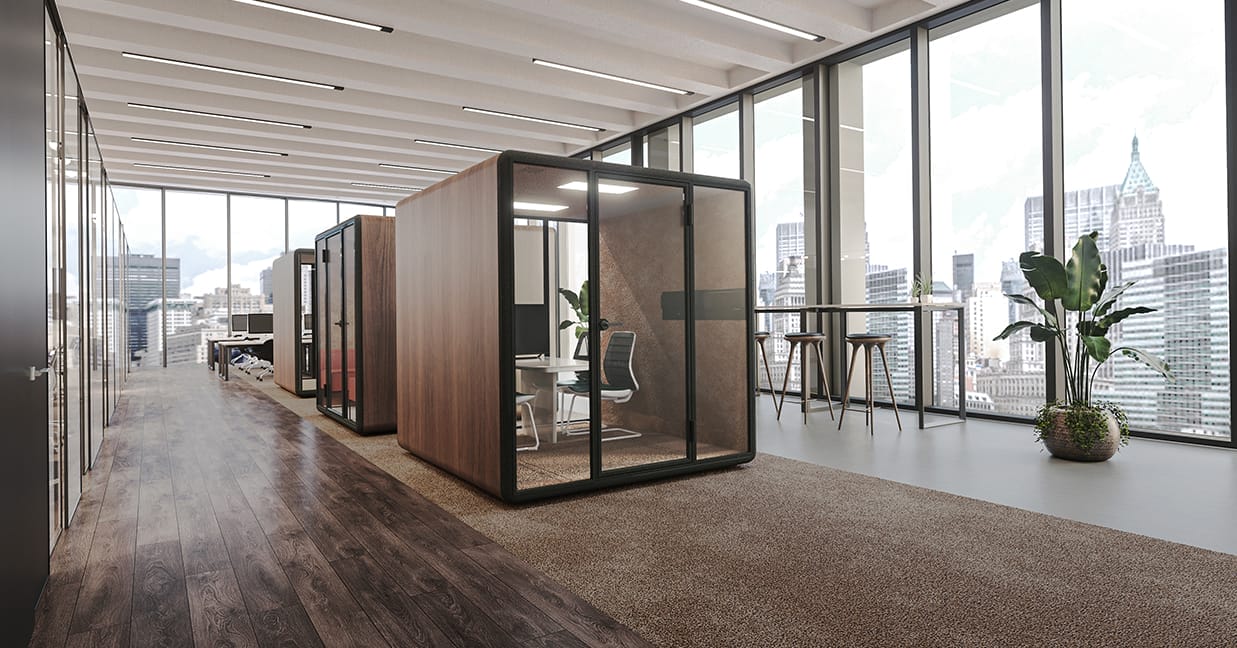
Kolo Duo meeting booth can be used as a focus space.
7. Restoration spaces
Restoration spaces are another emerging workplace design trend, providing an area for employees to step away from their work and recharge.
Including restorative spaces in an office can counter tiredness and stress, promoting health and wellbeing and boosting productivity.
Offering relief from mental fatigue, restoration spaces provide a temporary escape from the hustle and bustle of the office, giving employees time to reset.
Restoration spaces often incorporate natural materials such as timber and stone, and many feature indoor plants to project a calming mood aligned with nature.
Comfortable furniture is also used to make employees feel at ease, adding to the room’s restorative qualities.
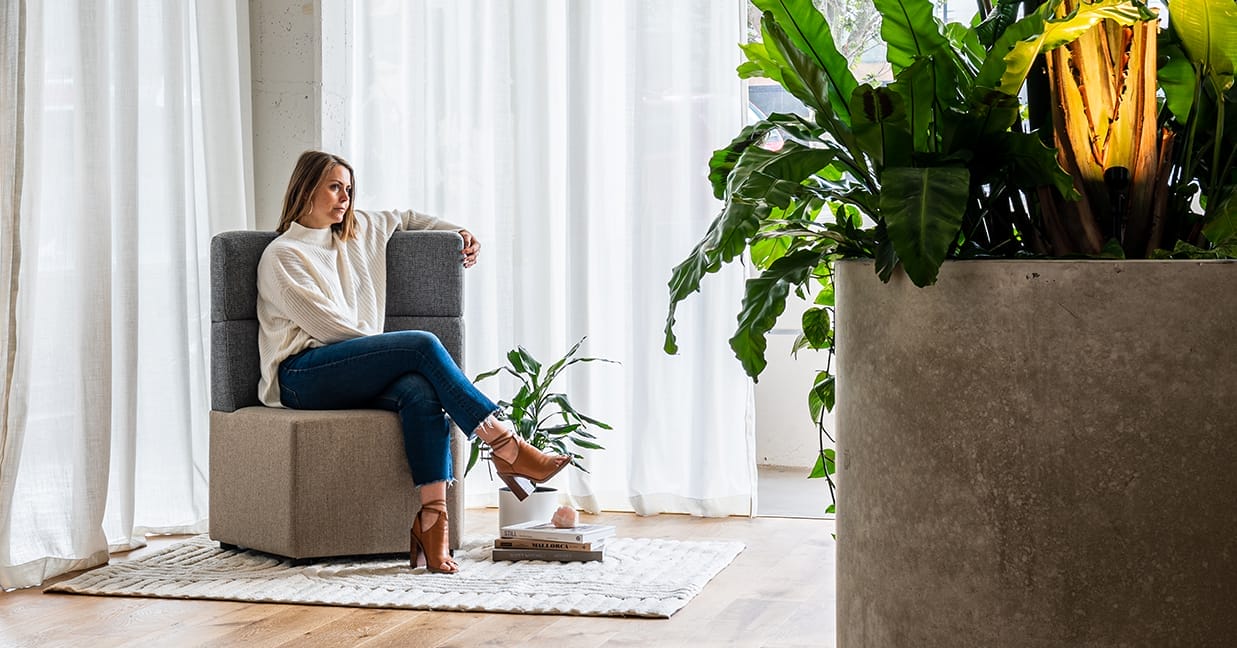
Konfurb Star Family modular furniture creates a restorative space
Incorporating ergonomics
In any commercial office fit-out, high-quality ergonomic furniture is essential.
As employers place greater emphasis on staff health and wellbeing, ergonomic seating can complement the redesign process and enhance the office experience.
Wellness and ergonomics are core values of Buro, and replacing standard work chairs with ergonomic options can make the office a more inviting and comfortable place.
Hybrid employees working at home requiring ergonomic chairs for their health and wellbeing. Dive deeper in our article, How ergonomics can deliver a heath boost for remote employees.
By reducing the risks of aches, strains and pains, ergonomic seating for desks, collaboration spaces and focus areas can support productivity and workplace wellbeing.
When adapting your office to meet the changing nature of work, it’s important to select the best furniture options available.
Options including the Buro Mentor can complement any workplace or home office setting, bringing sophisticated design and cutting-edge ergonomics to the table.
Featuring Buro’s Dynamic Intelligence™ technology, the Buro Mentor boasts a self-weighting tension adjustment, adapting to the body’s postural needs and encouraging a neutral spine position.

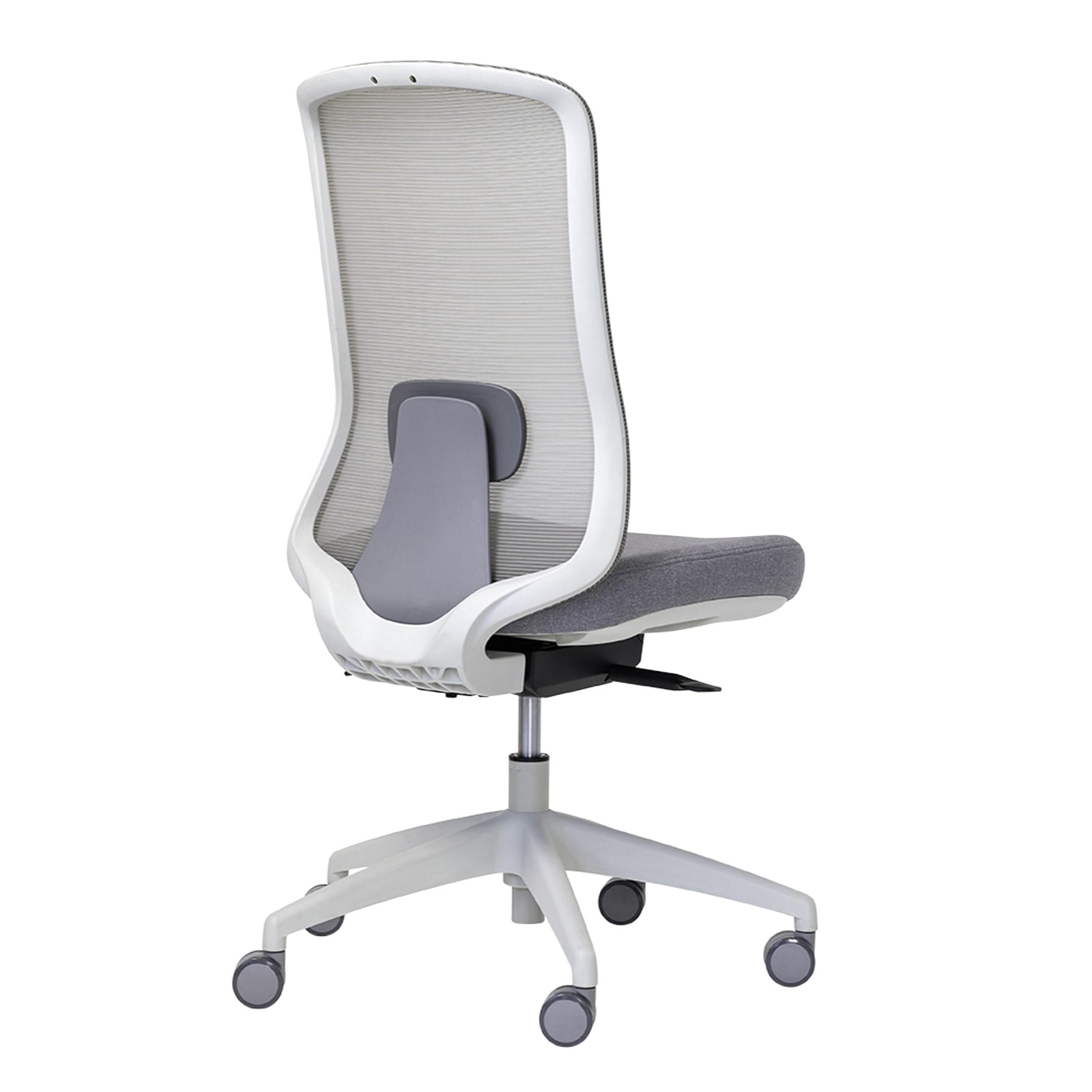
The Buro Elan has advanced ergonomic features, including a synchro mechanism, breathable mesh back, depth adjustable seat slide, lumbar support and optional armrests and headrests.
Designed to maintain maximum support and eradicate the risk of injuries, this chair will keep everyone in the office productive, cool, calm and collected.
Perfect for social spaces, the Konfurb Orbit brings a touch of high-end design to the office.
Created by the internationally-acclaimed architect and designer, Mac Stopa, the Orbit’s eye-catching curved organic shape blends seamlessly into focus and restoration spaces, and can be tailored with custom upholstery to complement office interiors.
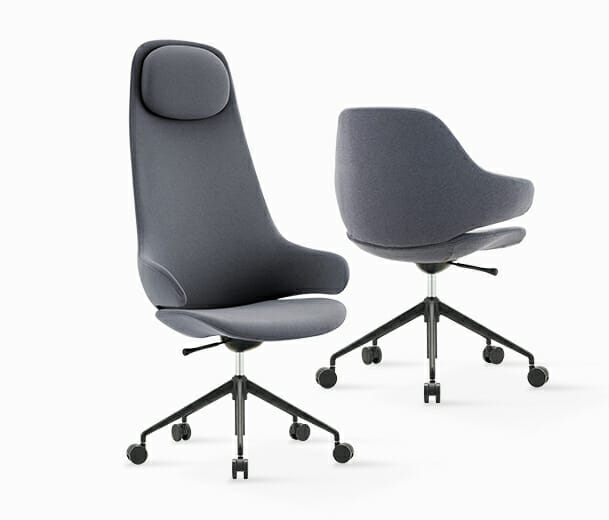
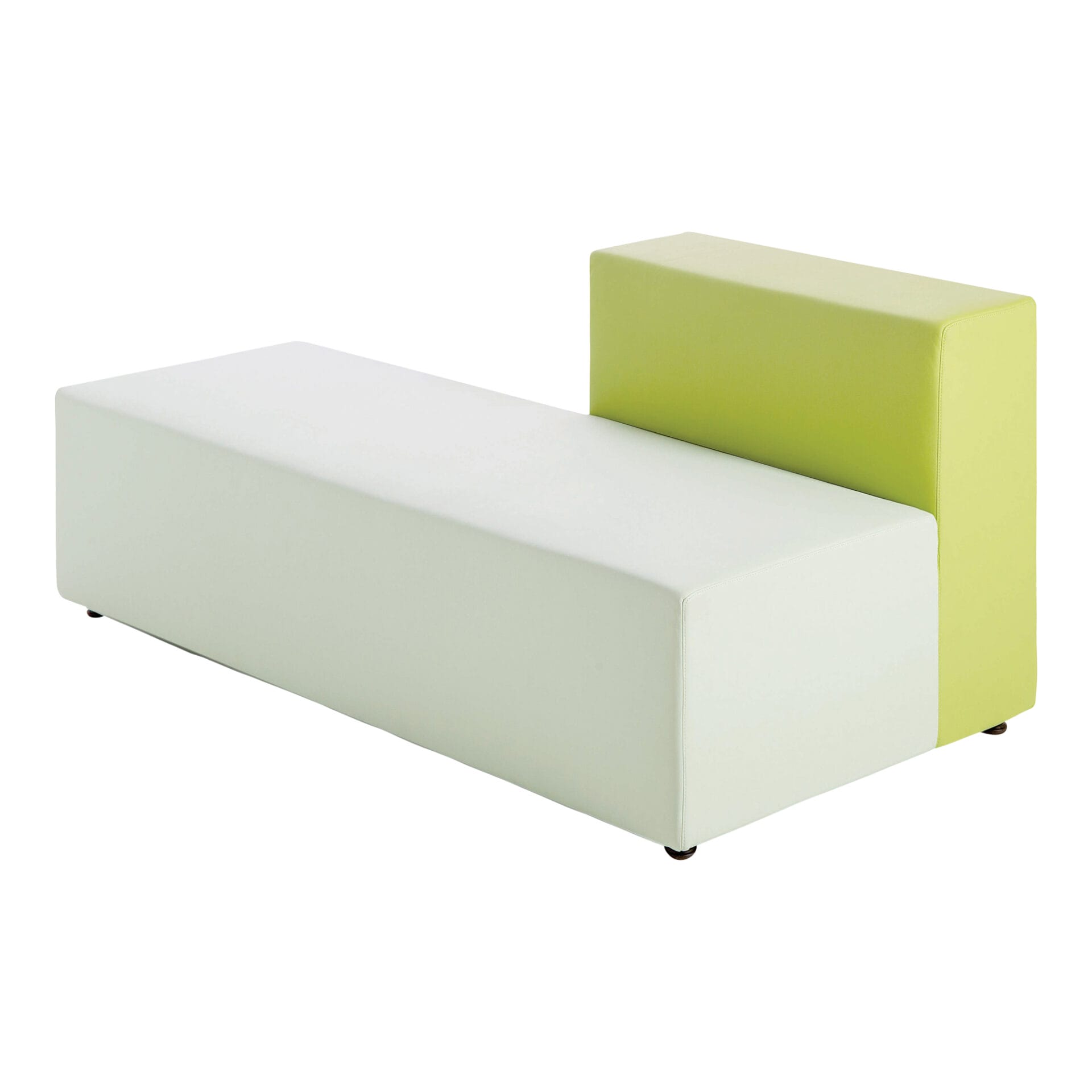
The Konfurb Block Family is our modular design for collaboration spaces, created to boost office creativity and teamwork.
With five available seat and back configurations, select custom fabrics to add a splash of colour to your event spaces, activity-based work areas, and lobbies.
Now you know about this year’s hottest workplace design trends, check out Buro’s complete range of ergonomic, home office, and modular seating.
